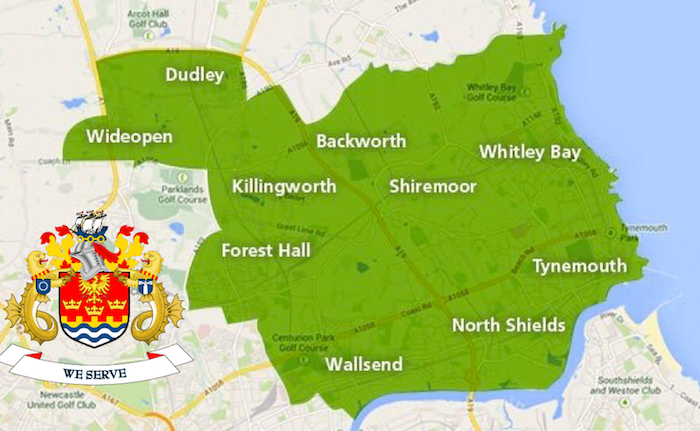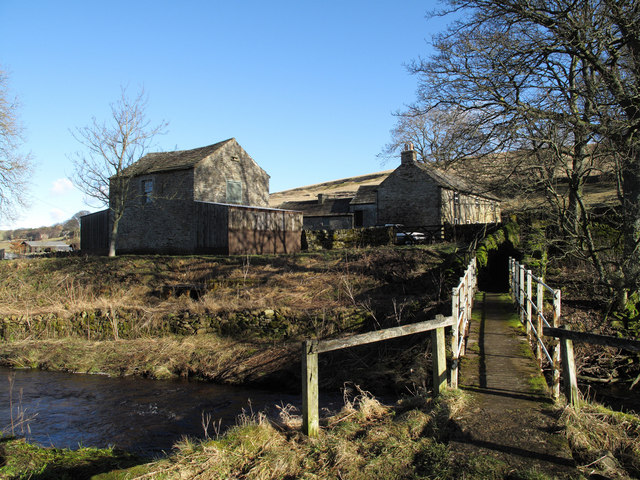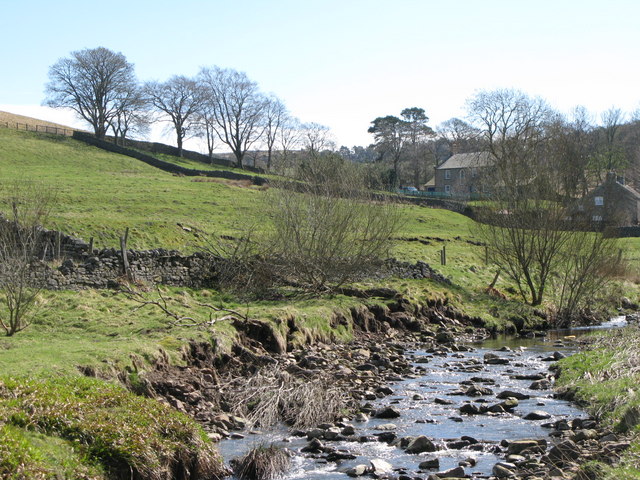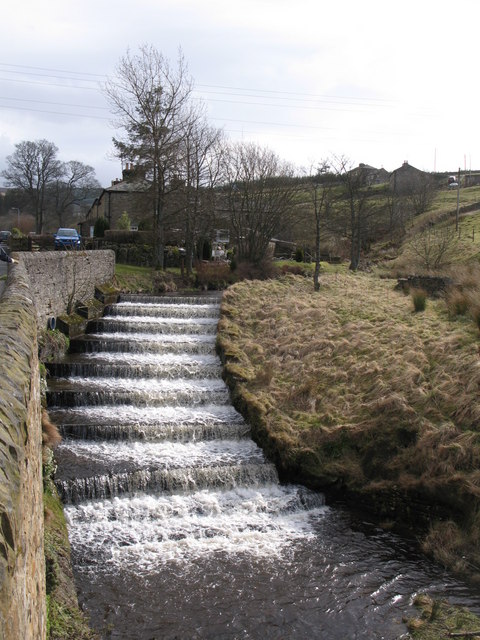Topics > Tyne and Wear > North Tyneside > Cullercoats > Historical Account of Cullercoats, 1894
Historical Account of Cullercoats, 1894
Extract from: JOHN ROBINSON (1894), ILLUSTRATED HANDBOOK TO THE RIVERS Tyne ,Blyth,& Wansbeck; ALSO A GUIDE TO TYNEMOUTH, CULLERCOATS, WHITLEY, MONKSEATON, ST. MARY'S ISLE, HARTLEY, SEATON DELAVAL, BLYTH, NEWBIGGIN, WITH THE LEGENDS AND TRADITIONS OF THE COAST; AND A Glance Guide to Newcastle.

CULLERCOATS
THE picturesque fishing village of Cullercoats is fast outgrowing the aspect of a village, and assuming the proportions and importance of a town. In olden times Cullercoats was a place of some commercial importance; coals were shipped from its harbour, and a large trade was done in the manufacturing of salt, but in 1726 the last of its salt pans were removed to Blyth, and the coal trade gradually gravitated to the Tyne. From that time until the last quarter of a century, the inhabitants have depended almost entirely upon the "harvest of the sea" for a livelihood. The Cullercoats fishersolk and their boats have long been famous for their skill, bravery, and daring; and its fisherlasses for their symmetry and beauty. In the middle of the last century Cullercoats was the fashionable resort during the bathing season; and Lady Astley, in her letters of 1751-4, frequently refers to the visits of well known fashionable ladies and their families to Cullercoats. In 1751, she writes: — "My Lady Ravensworth and My Lady Clavering were a month at Cullercoats bathing. Tynemouth and Cullercoats were much in fashion, not a room empty." In another letter she writes:— " Mrs. Charltonis at Cullercoats bathing, they tell me it is much the fashion this year. That there is a great deal of company there and at Tynemouth." At the beginning of this century the erection of the once well-known Salt Baths at Prior's Haven, Tynemouth, added greatly to the attractions at that place; and Cullercoats had to depend upon its own natural resources. During the last few years it has become famous as the residence of popular artists; and the beauties of its surroundings, together with the noble type of fishermen, and fine models of female beauty among its fisherlasses, have gained an artistic fame of which the inhabitants may be justly proud. It is now fast regaining its former proud position as a bathing place; and the rapid increase of house accommodation is quite phenomenal. The sailing of the fleet of fishing boats is one of the prettiest sights on the northeast coast; there are between forty and fifty "cobles," or fishing boats employed in the white fishing- from Cullercoats alone; and after having got over the bar, their brown-red sails swelling in the breeze, have a graceful and picturesque appearance.
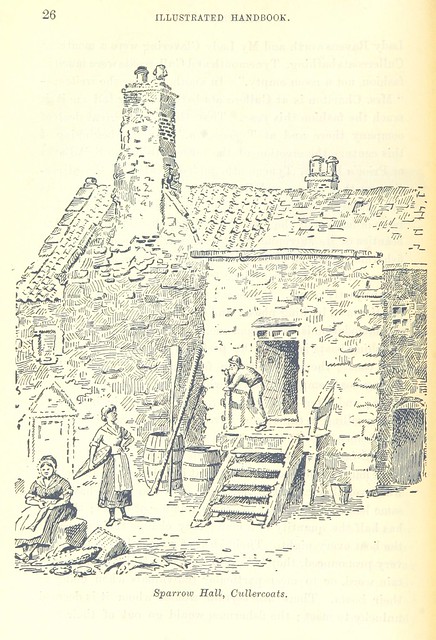
Old-fashioned customs and beliefs linger in the habits of these hardy fisher people; each boat has three men and a boy whenever they cross the bar; but each man must have the same length of line, and the same number of hooks ;the boy has half the quantity of a man; they change their places in the boat every night. Their ideas of good or bad luck is also very pronounced, they believe it to be unlucky to say a certain word, or to meet particular individuals when going to their boats. There are certain women whom It is deemed unlucky to meet; the fishermen would go out of their way if they saw them coming, and if a meeting could not be avoided, they would crook their thumbs into the palms of their hands to ward off the ill-luck. By frequent intermarriage there is constant repetition of their family name, that to a stranger it is impossible to distinguish one family from the other; and among themselves the difficulty is overcome by the use of by-names; at times the selection is not flattering; but as a rule the relationship is sufficient— such as — " Nanny Smith's Nanny" ; or " Tom Adams's son Jack," etc, etc.;or in the case of grandchildren we have— " Young Jack Adams's son Jack," etc. The oldest house in Cullercoats is called Sparrow Hall; it is a weather beaten, grim-looking mansion, built by one of the Doves,— a Quaker family who formerly had much property in the neighbourhood— probably about 1682,as that date is cut in one of the lintels of the windows. A dove is also carved upon one of the gables; but the natives of the village being more familiar with the homely sparrow than with that of a dove, always referred to the house as " Sparrow Hall." Above the north pier is the Life-Brigade Look-out with its quaint little steeple; facing the sea, on the foreshore, are the Life-Boat House, and the Salt Water Baths. The Crab Hill, and the Bear's Back Rock are the favourite resort of naturalists; the cliffs contain a fine deposit of fossil fish; while the ninety fathom kyke will be seen crossing the haven from the concrete pier to the Beacon Point; the last-named point was one of the sites for the Alarm Beacon fires in the olden times, when the coast was threatened with invasion
At the end of Beverley Terrace, the beautiful Church of St. George was erected in 1882-4 by the Duke of Northumberland in memory of his father. Its tall, delicate spire is a striking feature on the coast line; and a land mark seen from far off at sea.
Tynemouth < Robinson, 1894 > The Monk's Stone
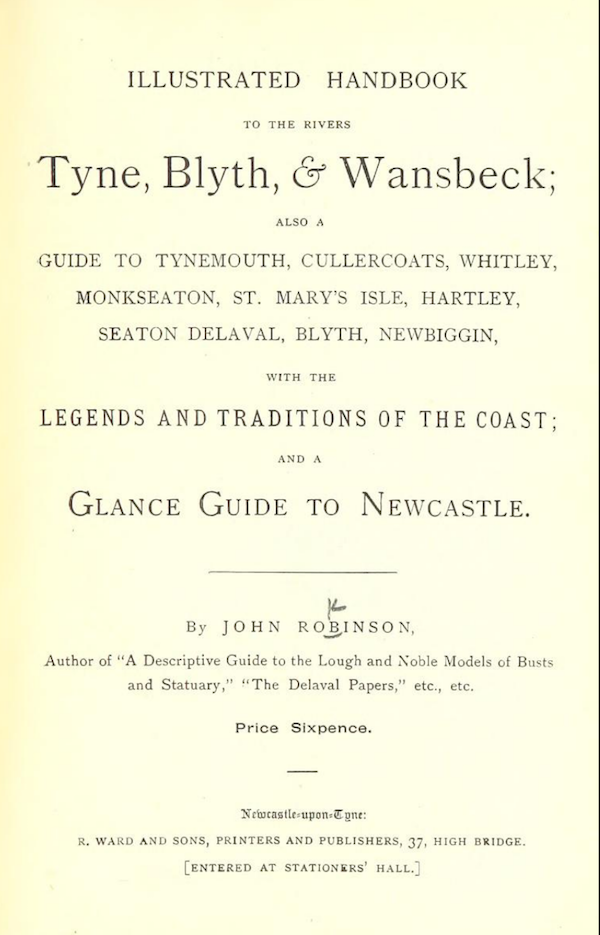
from http://access.bl.uk/item/pdf/…
JOHN ROBINSON (1894), ILLUSTRATED HANDBOOK TO THE RIVERS Tyne , Blyth, & Wansbeck etc.
- JOHN ROBINSON (1894), ILLUSTRATED HANDBOOK TO THE RIVERS Tyne ,Blyth,& Wansbeck; ALSO A GUIDE TO TYNEMOUTH, CULLERCOATS, WHITLEY, MONKSEATON, ST. MARY'S ISLE, HARTLEY, SEATON DELAVAL, BLYTH, NEWBIGGIN, WITH THE LEGENDS …
Added by
Simon Cotterill
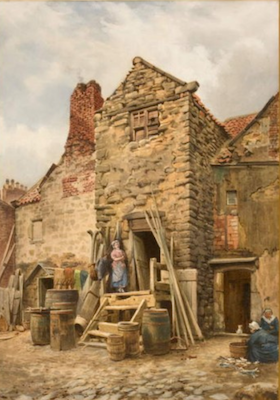
Co-Curate Page
Sparrow Hall
- The Dove family, local coal owners, built a large 3 storey Jacobean house in Cullercoats in 1682. It stood in grounds near to the cliffs and the apex stone of …


from http://access.bl.uk/item/pdf/…
JOHN ROBINSON (1894), ILLUSTRATED HANDBOOK TO THE RIVERS Tyne , Blyth, & Wansbeck etc.
- JOHN ROBINSON (1894), ILLUSTRATED HANDBOOK TO THE RIVERS Tyne ,Blyth,& Wansbeck; ALSO A GUIDE TO TYNEMOUTH, CULLERCOATS, WHITLEY, MONKSEATON, ST. MARY'S ISLE, HARTLEY, SEATON DELAVAL, BLYTH, NEWBIGGIN, WITH THE LEGENDS …
Added by
Simon Cotterill


